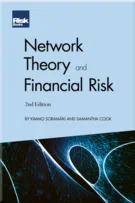How to Build Preventive Key Risk Indicators
Introduction
Operational Risk in Four Letters
An Invisible Framework
Small is Beautiful in OpRisk Management
The Business Value of ORM
How to Minimise ‘People Risk’
The Missing Piece
Risk Appetite and Framework
From Russian Roulette to Overcautious Decision-making
The Importance of Preventive KRIs
How to Build Preventive Key Risk Indicators
Unlocking KRIs
Six Steps for Preventive KRIs
Have Your Cake and Eat It
Conduct, Not ‘Conduct Risk’
How to Manage Incentives
Is Reputation Risk Overstated?
What Regulators Want
Conduct & Culture
OpRisk Takes Forward Steps at OpRisk Europe 2014
Modern Scenario Analysis
The Rogue’s Path
Rogue Trading No Training: The Connections
What Brexit Teaches OpRisk
OpRisk Survey Shows the Insidious Effects of Political Risk
Discarding the AMA Could Become a Source of OpRisk
UCL Research Shows that SMA Reforms Introduces Capital Instability and Discourages Risk Management
Memo to Bank CEOs: Treat OpRisk with More Respect
Don’t Let the SMA Kill OpRisk Modelling
Key Risk Indicators (KRIs) for operational risk have attracted considerable attention over the recent years. The need for predictability and reassurance in a business world becoming increasingly threatening is definitely a factor. Many boards of directors have asked their senior managers and risk managers to come up with a list a leading KRIs, a request usually followed by a spark of anxiety, activity and often puzzles in the risk management team.
This article addresses some of these puzzles, by proposing a three step approach aimed at simplifying the practice of selecting and designing leading KRIs:
-
- Recycle what exists: many of your leading KRIs exist already in your organisation,however under other names: find them and use them
-
- Understand the causes: take time to reflect and identify the drivers of your different operational risks, at different levels: not only the direct causes, but the root causes of incidents, including the two risk dimensions: drivers of likelihood and drivers of impact
-
- Validate the benefits: put your risk indicators to the test: do they ever prevent incidents? Do they influence business decisions? Rules of reporting
Copyright Infopro Digital Limited. All rights reserved.
As outlined in our terms and conditions, https://www.infopro-digital.com/terms-and-conditions/subscriptions/ (point 2.4), printing is limited to a single copy.
If you would like to purchase additional rights please email info@risk.net
Copyright Infopro Digital Limited. All rights reserved.
You may share this content using our article tools. As outlined in our terms and conditions, https://www.infopro-digital.com/terms-and-conditions/subscriptions/ (clause 2.4), an Authorised User may only make one copy of the materials for their own personal use. You must also comply with the restrictions in clause 2.5.
If you would like to purchase additional rights please email info@risk.net









